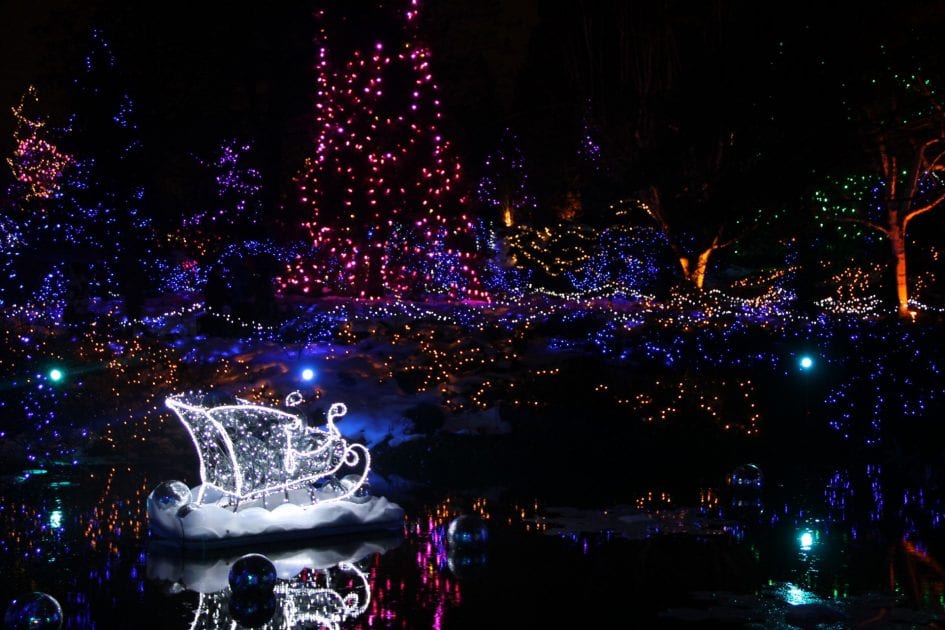The first year that my family stopped going to Van Dusen Botanical Garden’s Festival of Lights as a family, I was devastated. We had gone every year since I was a little girl, and it was one of my favourite parts of the season. We would arrive early, near the beginning of the festival, and wander around – often in the rain and cold, freezing our butts off – looking at the thousands upon thousands of lights strung around a relatively small part of the Garden. We would listen to carolers and watch the Dancing Lights show on the pond in the front, where the lights flash in time with a medley of winter songs, and we would grab hot chocolate and stand by the rare heat lamp when we needed to unfreeze. I took hundreds of pictures – getting better at not blurring the lights every year, as I figured out how to use my digital camera. It was a time for us to be together.
I was in my thirties when it happened – which wasn’t so long ago – but I was devastated. So I feel strongly about the importance of celebration and tradition.
The thing is that my traditions are not my students’ traditions. I love having lights up and decorated trees and winter boughs that simply smell green and candles flickering in the night. I don’t put up a menorah or cross or rangoli decor. It’s not that I dislike any of these, particularly; they’re just not my traditions. They don’t represent me, and so I don’t include them in my decorations.
Our schools should be places where all of our students find representation. All of our students should feel comfortable and safe and represented at the school. Yet when I look at school decorations, they are almost invariably Christmas decorations (and called such). Secular Christmas decorations, to be sure, but representative of a single culture nonetheless. Some schools spend a lot of time decorating for various cultures – Diwali decorations in (this year) November, Eid decorations in (this year) May, Christmas decorations in December, Chinese New Year decorations in (next year) February). Other schools focus on things like Halloween, Christmas, Valentine’s Day. I don’t see Winter Solstice decorations or Kwanza decorations hardly ever, not here, at any rate.
And what about our students for whom these types of holidays and celebrations are culturally or religiously inappropriate? How are they represented in our schools? I have students who don’t come to school on some days because the celebrations going on are antithetical to their beliefs. If school is meant to be a safe place, a place where all students are welcomed and represented … how do we reconcile that?
I don’t have an answer to this. I have students in my classes who will be disappointed with no decorations; I have those who will be uncomfortable with certain decorations. How can I balance between them?
How can we celebrate the changing seasons and holidays in our schools without excluding some people and including others?


Leave a Reply